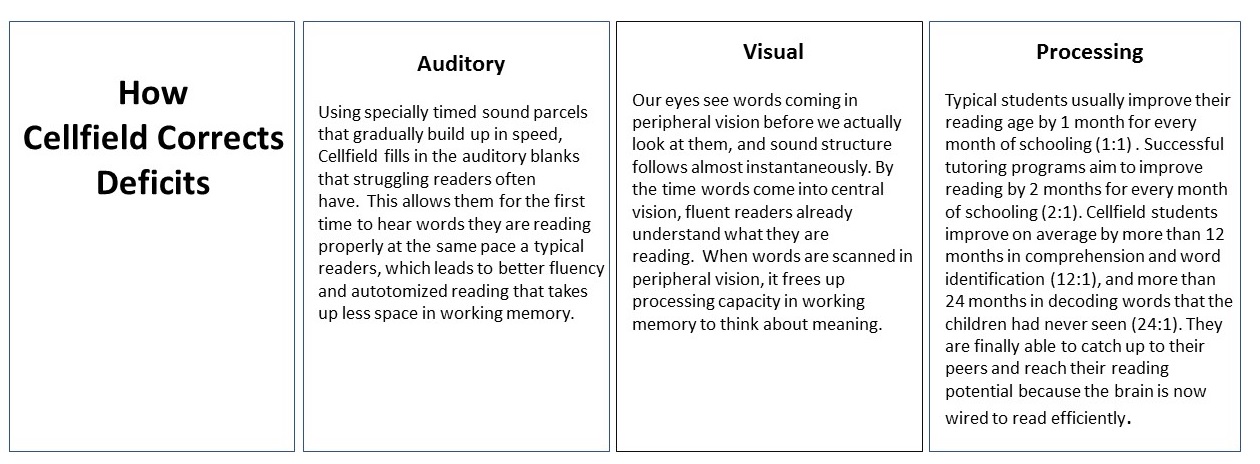ONCE CONNECTIONS ARE MADE, READING CAN BE LEARNED SMOOTHLY – CELLFIELD CREATES CONNECTIONNS
Centuries of belief that all humans are “˜hard wired’ has resulted in a mainstream approach of compensating for dyslexia, rather than facing it head on. Brain imaging research has shown consistent differences in how dyslexic brains are wired compared to typical readers. Brain plasticity research has shown that our brains are plastic, and that when stimulated appropriately, can change.
Cellfield trains the dyslexic brain to read more efficiently. A 2009 Cellfield study performed at the University of Tasmania, recorded neural activity during reading, using Event Related Potentials (ERP) methods. ERP results indicated neural changes only within the Cellfield group, which shifted activity from the right hemisphere to the left hemisphere “suggesting, at least neurally, a partial return to language processing which more closely resembles that of (typical) readers”.

